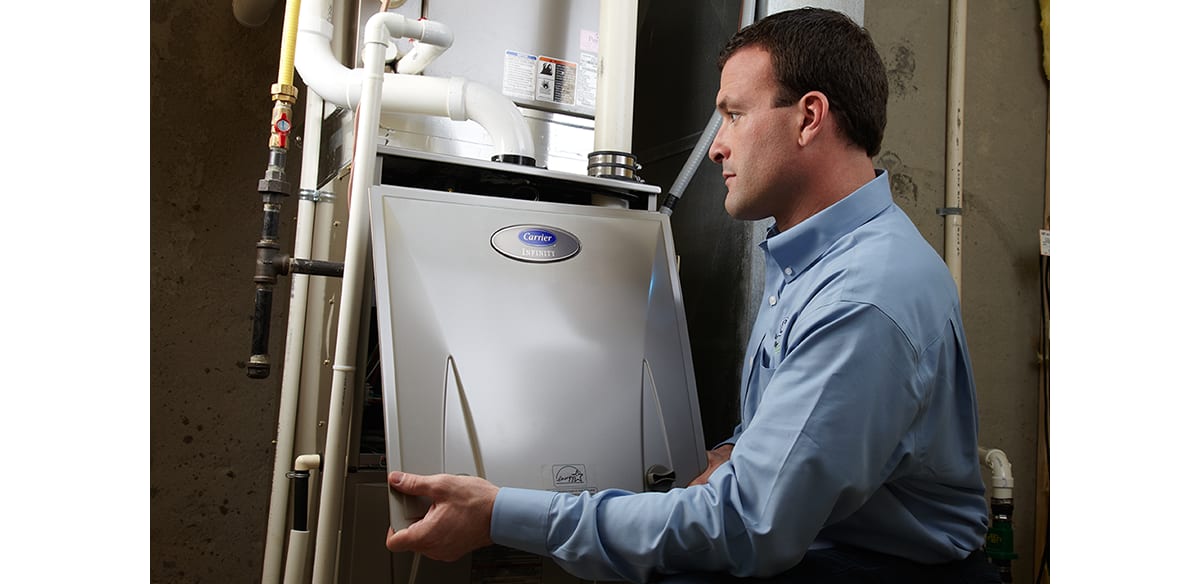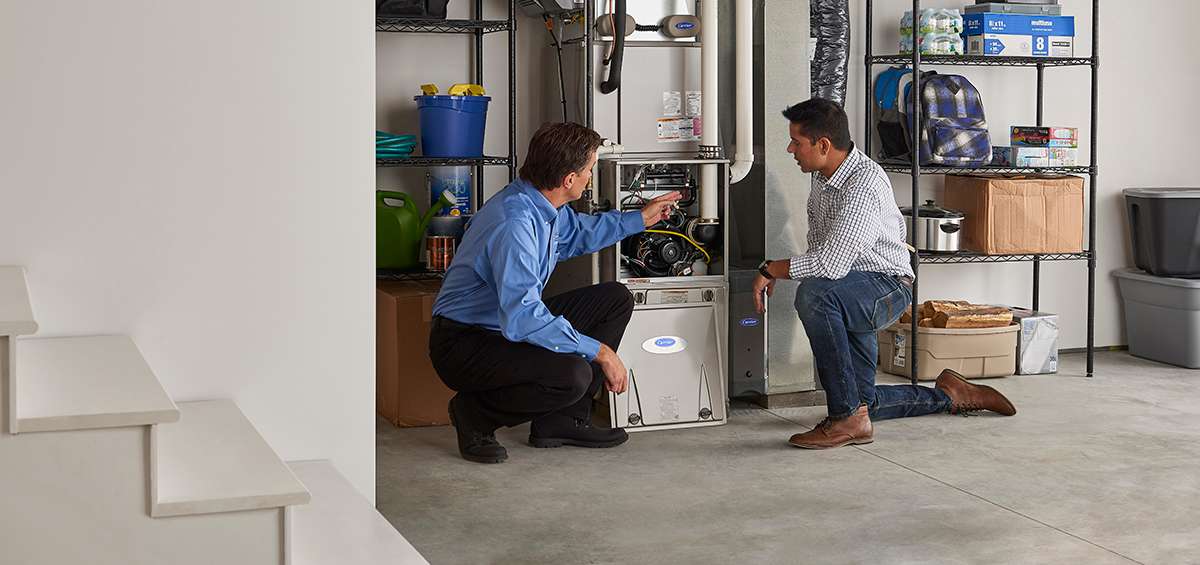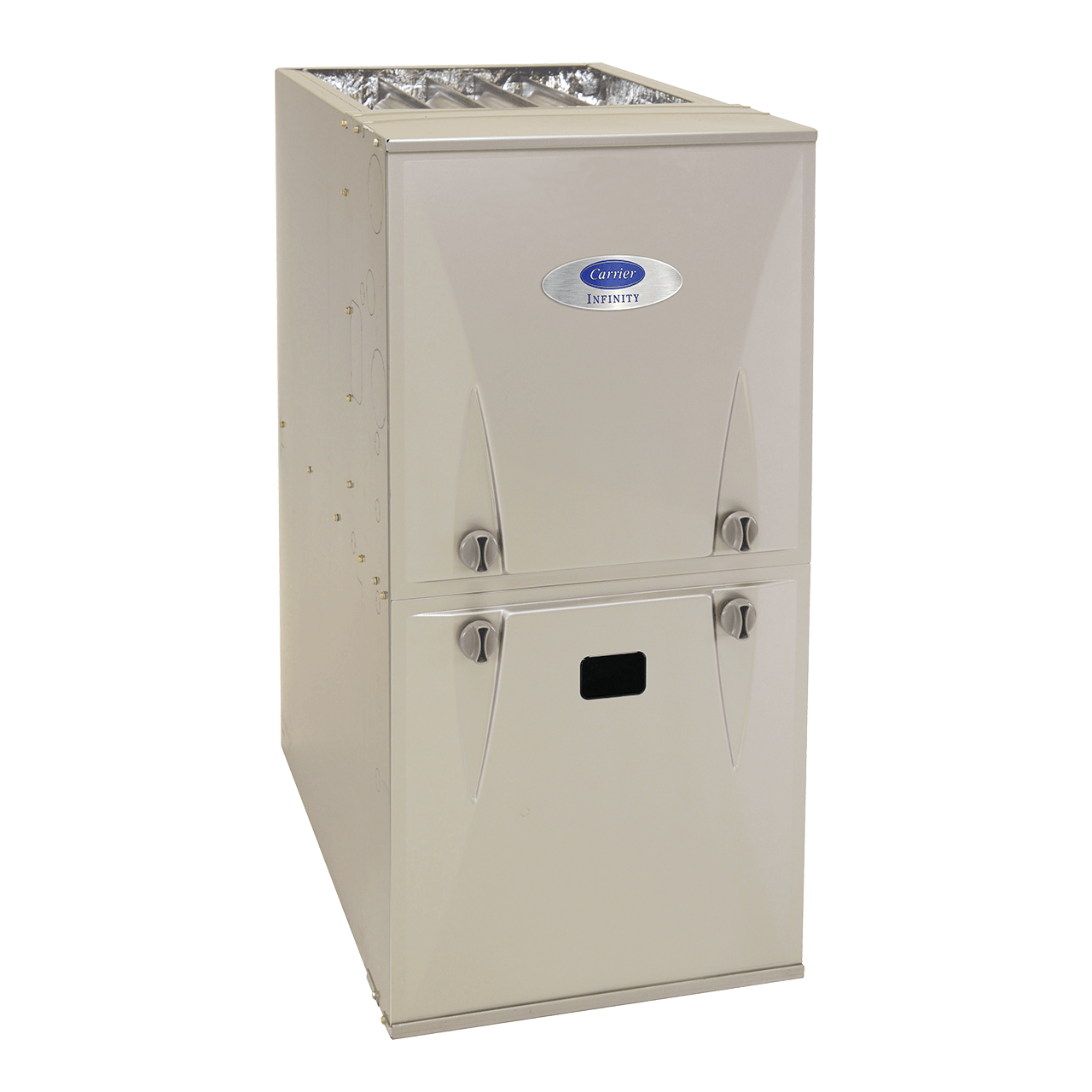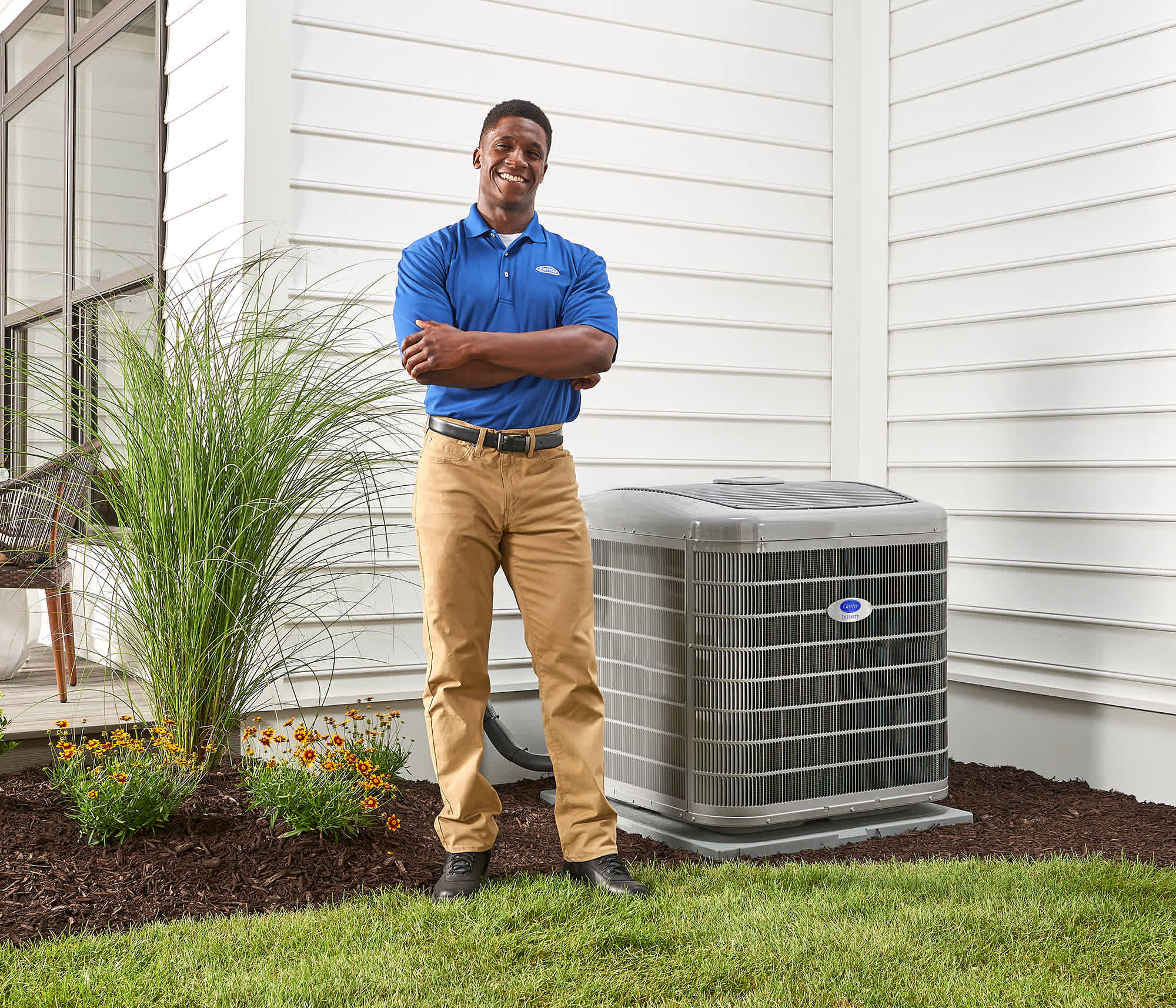Furnace Install Guide: What To Know About Furnace Installation
By Travis Baugh
Our furnace installation guide will walk you through the benefits of professional furnace installation, steps in the furnace install process, provide tips on how to find a local furnace installer, and help you answer frequently asked questions on furnace installation.
How to Install a Furnace
The furnace installation process involves several critical steps to ensure proper setup and safe operation. Here’s a comprehensive overview of the process.
1. Pre-Installation Assessment And Preparation
Your HVAC contractor will start the process by evaluating whether you need your furnace replaced, then assessing your home’s heating needs based on size, insulation, and layout. The furnace installer will then recommend the appropriate furnace type (gas furnace, electric furnace, oil furnace), size, and efficiency (measured in AFUE rating) based on the home evaluation. Upon arriving at you home, the furnace installer will then clear the installation area (usually in a basement, attic, or utility closet) and ensure proper ventilation and access.
2. Remove The Old Furnace
Your furnace installer will turn off power and gas supply to the old furnace and disconnect the old furnace from ductwork, fuel lines, electrical connections, and exhaust venting. After that, it’s time to safely remove and dispose of the old furnace.
3. Prepare the Furnace Location
Once the old furnace has been removed, it is time to prepare the furnace location. Your furnace installer will ensure that the existing ductwork is compatible with the new furnace. If needed, the technician may modify or install new ducts for proper airflow. For a gas furnace, a gas line connection will be installed if one is not already in place. If you plan on installing a propane furnace, a propane tank or line will need to be hooked up. For electric furnaces, the technician will install the necessary electrical wiring or connections to ensure proper operation.
4. Install The New Furnace
Next, the new furnace will be positioned in the designated area, ensuring it’s level and properly aligned as an upflow furnace, downflow furnace, or horizontal furnace. The new furnace will be attached to the existing or new ductwork with all connections secure and sealed. For a gas furnace, the furnace will be connected to the gas supply line, using proper fittings and ensuring there are no leaks. For electric furnaces, wiring is connected to the furnace, and a dedicated circuit breaker is installed if needed. The exhaust venting system is then installed, ensuring the furnace safely vents combustion gases outside. Ducts are connected to the furnace’s supply and return ports. Venting is also installed to ensure proper air circulation and exhaust of combustion gases.

5. Furnace Configuration and Testing
6. Final Checks and Safety Verification
7. Cleanup and Inspection

Benefits of Choosing Professional Installation vs DIY
Improper Sizing Risks Efficiency and Comfort
Safety Hazards Can Be Serious
Energy Efficiency Depends on Precise Installation
Protect Your Investment and Peace of Mind

Why Choose Carrier For Furnace Installation
Carrier is synonymous with quality and reliability when it comes to furnace installation. For decades, we have provided homeowners with superior heating solutions.
One key reason to choose Carrier is our Factory Authorized Dealers. These experts possess the knowledge and expertise to manage any installation with precision and care. They have NATE certification to ensure they are up to date with the latest industry advancements and are adhering to best practices to ensure your furnace is installed correctly and efficiently.
Additionally, we offer a wide range of energy-efficient furnace options to meet your specific needs. Our furnaces are designed to maximize heating performance while minimizing energy consumption, helping you save on heating utility bills without compromising comfort.
Choosing Carrier for your furnace installation means you’re investing in a reliable and efficient heating solution.
Warranty and Maintenance for Your Carrier Furnace
Carrier's Warranty Coverage

Furnace Maintenance
- Cleaning filters
- Checking the heat exchanger
- Lubricating moving parts
- Inspecting the blower motor
How to Find a Carrier Technician For a Furnace Installation Near Me
To find a Carrier furnace installer near you, visit our Dealer Locator. Contact the dealer of your choice to schedule a consultation or furnace replacement. They can assess your home's heating needs and recommend suitable furnace models. Request a detailed quote that includes the cost of the furnace, installation services, and any additional fees. Comparing quotes from multiple dealers can help you find the best value. Contact your local Carrier dealer today and find furnace installation near me.

Frequently Asked Questions About Furnace Installation
Explore Carrier Furnaces
Choosing a Carrier furnace ensures reliable and efficient heating for your home, with advanced technology that optimizes energy use and enhances comfort. Known for their durability and quiet operation, Carrier furnaces provide consistent warmth throughout the winter while helping to reduce heating costs. Explore Carrier's line of furnaces today.
ENERGY STAR® certified. Our highest efficiency and most advanced furnace with up to 98.5% AFUE for premium energy savings with excellent humidity control and premium comfort
ENERGY STAR® certified. Up to 97.0% AFUE for premium energy savings with enhanced comfort features.
All sizes ENERGY STAR® certified. Up to 97% AFUE for premium energy savings with standard comfort features.
Learn More About Furnace Installation
- How Much Does it Cost to Replace vs Repair a Furnace?
- How Do Gas Furnaces Work?
- 10 things to consider when buying a furnace
- How long does a furnace last?
- Evaluating a Heat Pump vs Furnace
- Learn about the benefits of HVAC financing





